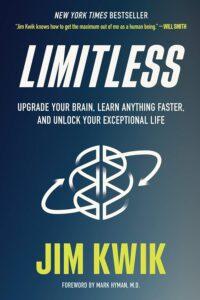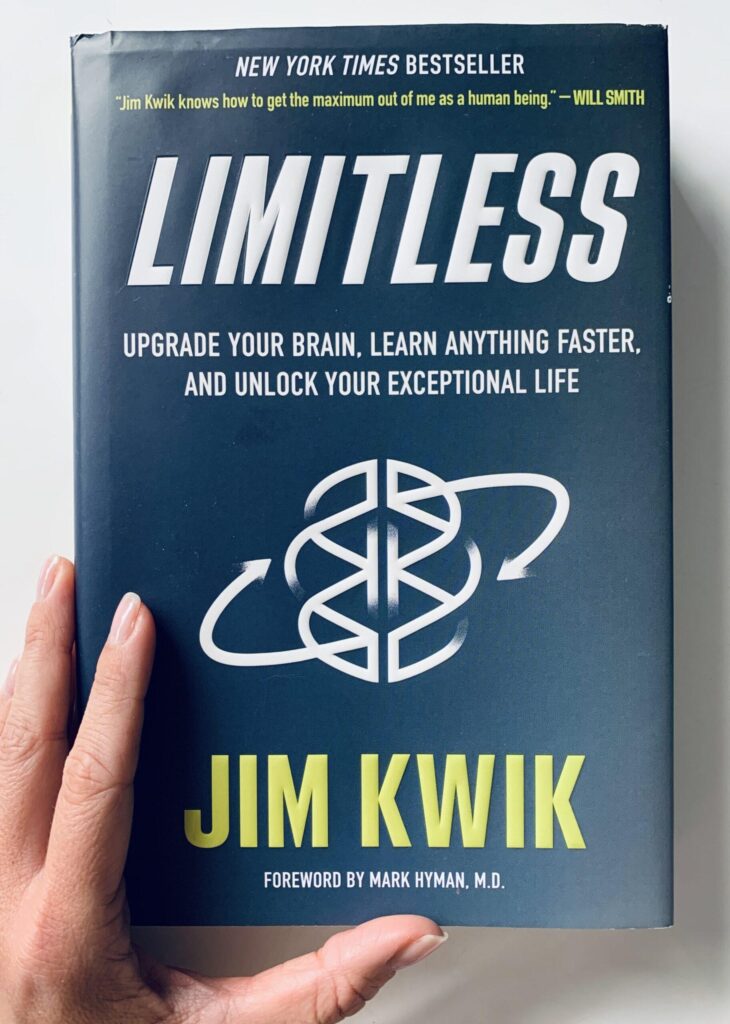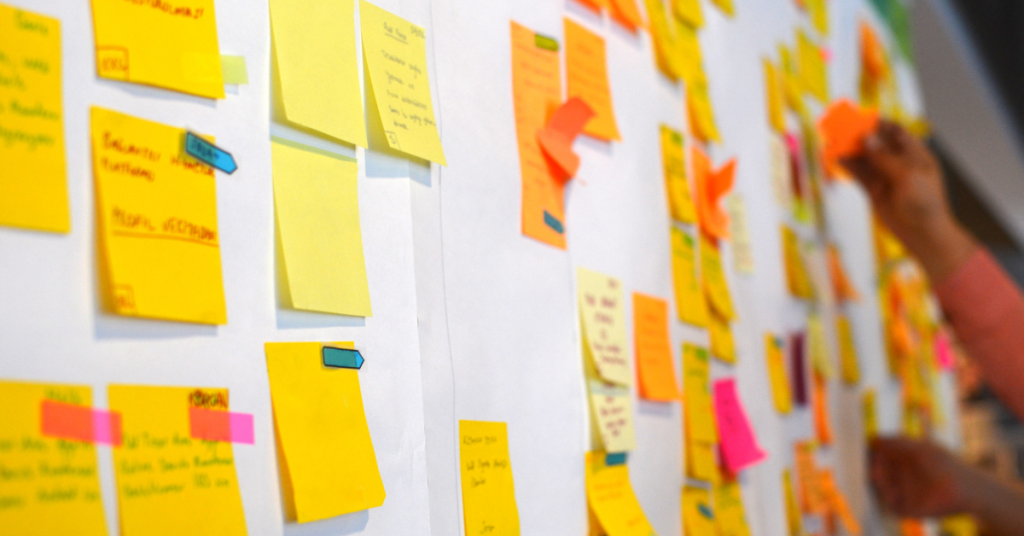 Limitless
Limitless
Upgrade Your Brain, Learn Anything Faster, and Unlock Your Exceptional Life
Jim Kwik
Hay House Inc (7 April 2020)
About the author
Jim Kwik is a world-renowned expert in memory improvement, brain optimization, and accelerated learning. After a childhood brain injury left him learning-challenged, Kwik created strategies to dramatically enhance his mental performance. He has since dedicated his life to helping others unleash their true genius and brainpower. For over two decades, he has served as a brain coach to students, seniors, entrepreneurs, and educators. His work has touched a who’s who of Hollywood elite, professional athletes, political leaders, and business magnates, with corporate clients that include Google, Virgin, Nike, Zappos, SpaceX, GE, 20th Century Fox, Cleveland Clinic, WordPress, and such institutions as the United Nations, Caltech, Harvard University, and Singularity University.
About the book
“One of my core beliefs is that human potential is one of the only infinite resources we have in this world. Most everything else is finite, but the human mind is the ultimate superpower—there is no limit to our creativity, imagination, determination, or ability to think, reason, or learn. Yet this resource is also among the least tapped. All of us can be the heroes of our own story, dipping into the well of our potential every single day and never having that well run dry. But so few of us approach our lives this way. That’s why I wrote this book—to help you realize that no matter where you are, or where you’ve been, you absolutely can free yourself and go from limits to liberation. That might be the only ‘extra’ you need to transition from ordinary to the extraordinary world.
This book is going to provide you with the extra. What you’ll get within these pages is a series of tools that will help you cast off your perceived restrictions. You’re going to learn how to unlimit your brain. You’re going to learn how to unlimit your drive. You’re going to learn how to unlimit your memory, your focus, and your habits. If I am your mentor in your hero’s journey, then this book is your map to master your mind, motivation, and methods to learn how to learn. And once you’ve done that, you will be limitless.”
I’m completely fascinated by the incredible potential of the human brain. Recently, I came across Limitless by Jim Kwik, and I couldn’t wait to delve into the story of a “boy with a broken brain” who dedicated decades to unlocking his mind’s full potential and now helps others do the same.
Jim Kwik holds the title of the world’s top brain coach, and his book Limitless is a practical guide to expanding your mental horizons and improving your brain fitness. Inside, you’ll discover a treasure trove of tips and techniques that can unleash your brain’s superpowers and transform your habits. It’s like a user manual for upgrading your mental abilities and achieving more in life.
The book is packed with fantastic – and highly practical – ideas, and I’m thrilled to share a few of my favourites with you. Let’s jump right in!
P.S.: The book comes with great additional resources – check it out!
Key insights:
The Limitless Model
“You can learn to be, do, have and share with no constraints. I wrote this book to prove this to you. If you are not learning or living at your true potential, if there is a gap between your current reality and your desired reality, here’s the reason: There is a limit that must be released and replaced in one of three areas:
• A limit in your Mindset—you entertain a low belief in yourself, your capabilities, what you deserve, or what is possible.
• A limit in your Motivation—you lack the drive, purpose, or energy to take action.
• A limit in your Methods—you were taught and are acting on a process that is not effective to create the results you desire.
This applies to an individual, a family, an organization. We all have our own unique story of struggles and strengths. Whatever your situation happens to be, here’s the best part: You’re not alone. I’m going to help you become limitless in your own way, within the three-part framework you’re about to learn: Limitless Mindset, Limitless Motivation, and Limitless Methods.”
Here’s Jim’s fantastic Limitless Model, which consists of three essential elements: Mindset, Motivation, and Methods.
In the book, Jim organizes these elements into separate sections, providing practical tools to help us master each one. Here’s how Jim breaks it down:
“- Mindset (the WHAT): deeply held beliefs, attitudes, and assumptions we create about who we are, how the world works, what we are capable of and deserve, and what is possible.
– Motivation (the WHY): the purpose one has for taking action. The energy required for someone to behave in a particular way.
– Method (the HOW): a specific process for accomplishing something, especially in an orderly, logical, or systematic way of instruction.”
These are the keys to unlocking your superpowers. There are no limits when you have the right mindset, motivation, and methods.
Now, let’s roll up our sleeves and get to work!
P.S.: Jim wrote an additional chapter on how to raise limitless children – check it out! I absolutely loved the ideas!
Digital Supervillains
“…technology is a vital part of progress and being limitless. It allows us to do everything from connecting to learning, making our lives that much more convenient. But it is possible that we are consuming digital technology at a rate that even its creators would find extreme. Much of the technology available to us today is so new that we don’t know the level at which we need to control our interaction with it. […]
Our community has expressed a growing concern about their overreliance on technology and they come to us to upgrade their brains to find relief from these ‘four horsemen’ of our age: digital deluge, digital distraction, digital dementia, and digital deduction. It’s important to note that overload, distraction, forgetfulness, and default thinking have been around for ages. While technology doesn’t cause these conditions, it has great potential to amplify them.”
To become a limitless superhero, you’ve got to confront some modern supervillains. These digital foes are the Digital Deluge, Digital Distraction, Digital Dementia, Digital Deduction, and Digital Depression.
Let’s have a quick look at them.
First, we’re deluged with an overload of information. Jim writes: “Compared to the 15th century, we now consume as much data in a single day as an average person from the 1400s would have absorbed in an entire lifetime.” That’s pretty mind-blowing, right?
Second, we’re distracted by all this digital stuff around us. “Instead of relaxing into the downtime that we might experience when waiting in line, waiting for a bus or an appointment, etc., we pull out our phones and train our distraction muscles.“ And it’s addictive as well.
Third, we see signs of “digital dementia” – a fancy way of saying our thinking skills are taking a hit because we rely so much on technology. “There’s research that says our brains are more like a muscle, rather than a hard drive that fills up. That the more you use it, the stronger it gets, and the more it can store. The question is: Are we making those choices consciously, or are we acting out of unconscious habit?”
Fourth, our power of deduction is fading because we can quickly turn to digital sources for answers. “The upshot is that deduction—an amalgam of critical thinking, problem solving, and creativity that is an essential skill for being limitless—is becoming automated.” I personally observe it a lot these days.
And there’s a fifth supervillain: Digital Depression. It comes from comparing ourselves to the shiny, perfect lives we see on social media. That can really mess with our self-esteem.
By the way, if you’re into understanding how technology affects our brains and lives, I recommend checking out Bored and Brilliant by Manoush Zomorodi and Irresistible by Adam Alter. You’ll find some fascinating insights there.
The FASTER Method
“To get the most out of this book, here is a simple method for learning anything quickly. I call it the FASTER Method, and I want you to use this as you read, starting now.
The acronym FASTER stands for Forget, Act, State, Teach, Enter, Review. Here’s the breakdown:
• F is for Forget – The key to laser focus is to remove or forget that which distracts you. […]
• A is for Act – Traditional education has trained many people that learning is a passive experience. You sit quietly in a class, you don’t talk to your neighbor, and you consume the information. But learning is not a spectator sport. The human brain does not learn as much by consumption as it does by creation. […]
• S is for State – All learning is state dependent. Your state is a current snapshot of your emotions. It is highly influenced by your thoughts (psychology) and the physical condition of your body (physiology). […]
• T is for Teach – If you want to cut your learning curve dramatically, learn with the intention of teaching the information to someone else. Think about it: If you know you have to give a presentation on what you learn, you will approach how you learn the topic with the intention of mastering it well enough to explain it to someone else. […]
• E is for Enter – What is the simplest and most powerful personal performance tool? Your calendar. We enter important things on our schedule. […] Do you know what a lot of people don’t schedule? Their personal growth and development. If it’s not on your calendar, there’s a good chance it’s not getting done. […]
• R is for Review – One of the best ways to reduce the effects of the forgetting curve is to actively recall what you learned with spaced repetition.”
Here it is – Jim’s secret recipe for FASTER learning:
Forget + Act + State + Teach + Enter + Review.
Let’s take a sneak peek at each step.
First, you’ve got to forget, at least for a little while, three things: wipe your mind clean of what you already know about a subject, push aside those non-urgent or unimportant distractions (remember, your brain can’t really multitask), and leave your limitations behind.
Second, you need to act on the information you want to learn. Here’s a quick tip: take notes and jot them down by hand (it’s more effective, by the way).
Third, it’s all about optimizing your state. Get your psychology in the right place with empowered thinking, and make sure you get your physiology right via eating, exercising, sleeping and breathing.
Next, teach someone else what you’re trying to learn. It’s the best way to dispel the fluency illusion.
Don’t forget to enter your learning time in your calendar and review what you want to learn (via active recall and spaced repetition).
I personally think this model is brilliant. And it aligns with Benedict Carey’s insights in his fantastic book How We Learn (check out our notes).
Tackle Your Limiting Beliefs (and LIEs)
“Mindset is made up of beliefs, assumptions, and attitudes we hold about ourselves and the world around us. All behavior is driven by belief, so before we address how to learn, we must first address the underlying beliefs we hold about what is possible.
We’re not born with pre-installed mindsets about what we’re capable of achieving—we learn these fixed and limited ways of thinking from the people in our lives and the culture we experience growing up.
Think of a young elephant tied to a stake in the ground. When it’s a baby, the elephant isn’t strong enough to pull the stake up so it eventually stops trying because it learns the effort is futile. As that elephant grows, it gains more than enough power and strength to pull out the stake, but it remains tied up by something as inconsequential as a rope and a flimsy piece of metal because of what it learned as a baby. In psychology, it’s called learned helplessness.
Most us behave like that elephant. At some point, we had an experience that gave us an impression of what we’re capable of, and our belief about our potential has been set ever since. But just as helplessness is learned, it’s just as possible to learn to be limitless. In this section, you’re going to learn about the seven lies we’ve been taught about our potential and how to replace them with new beliefs.”
I really love the elephant story.
The Father of Positive Psychology, Martin Seligman, did extensive research on learned helplessness, and he discusses it extensively in his books (for example, check out our notes on Flourish and The Optimistic Child).
The great news is that just as there’s an antidote to learned helplessness, which is learned optimism, there’s also a way to learn limitlessness. To achieve this, Jim suggests we start by tackling the seven LIEs (Limited Ideas Entertained) about learning:
“If you are like the vast majority of people out there, you are entertaining ideas about yourself that define you as something less than what you truly have the potential to achieve. You’re giving these ideas energy and allowing them to take residence in your mind, but they’re really nothing but BS (in this case, an abbreviation for Belief Systems).”
Here is a quick look at the LIEs:
LIE No.1: Intelligence is fixed – it’s simply not. Embrace the Growth Mindset.
LIE No. 2: We only use 10 percent of our brains – the truth is that you have all the power of the brain available to you NOW.
LIE No. 3: Mistakes are failures – they are opportunities to grow. Again, growth mindset style.
LIE No. 4: Knowledge is power – it’s not. Knowing how to apply this knowledge is.
LIE No. 5: Learning new things is very difficult – in fact, it’s much easier to learn new things if you know how to learn (aka methods).
LIE No. 6: The criticism of other people matters – “Don’t take criticism from someone you wouldn’t take advice from.”
LIE No. 7: Genius is born – we know it’s made. Think Grit.
P.S.: In her fantastic book Everything is Figureoutable, Marie Forleo delves into our belief systems. She wisely says, “When you change a belief, you change everything. Our beliefs either propel us to or prevent us from living to our fullest potential. Our beliefs determine whether we fail or succeed, and how we define success in the first place.”
The Motivation Formula
“When you combine purpose, energy, and small simple steps S3, you get sustainable motivation. And the ultimate form of motivation is the state of flow. Think about it as energy management. Creating it, investing it, and not wasting it. A clear purpose or reason gives you energy. Practices you employ will cultivate energy for your brain and the rest of your body, and small simple steps require little energy.”
To become Limitless, we must have motivation that can stand the test of time. Here’s the formula Jim recommends:
Motivation = Purpose + Energy + S3
First, define your Purpose (WHY are you doing what you do?). Then, boost your Energy by taking care of your body through eating well, exercising, and getting enough sleep. Finally, dive into your work, starting with the next small, simple step. Keep repeating this process.
P.S.: This also brings to mind Angela Duckworth’s grit formula: Grit = Interest + Practice + Purpose + Hope.
Methods Toolbox
“Methods are the procedures or processes for accomplishing something. In this context, method is the process of learning how to learn, also called meta learning. When we go through the education system, we are taught very antiquated and inefficient ways of learning, such as sub-vocalization and rote memorization. I mentioned at the start of this book, when I was struggling as “the boy with the broken brain,” I wasn’t incapable of learning; history has shown that. But I wasn’t succeeding at learning in the way I was being taught. It wasn’t until I mastered a new way of learning … that I could finally use my brain to excel.”
Now that you’ve put in the work on your mindset and motivation, it’s time to roll up your sleeves and get to the METHODS – those practical tools that will propel you towards limitlessness. Jim offers some incredibly practical tips to enhance specific areas:
Focus: Concentration is key. You’ve got to eliminate distractions, practice mindfulness, and find strategies to deal with tasks that keep invading your thoughts. By the way, focus and concentration are the most critical executive skills for success!
Study: Effective studying means knowing how to study. Jim takes us through the art of studying, teaching us about good habits like active recall, spaced repetition, the benefits of listening to music, and the importance of taking notes, among other valuable techniques.
Memory: As Jim puts it, “If you could not remember, then you could not learn anything.” Jim shares methods to help us remember stuff, including visualization, association, adding an emotional touch, and linking information to a specific location.
Speed reading: Reading is a path to growth, and reading faster can be a game-changer. Jim suggests using your finger as a visual guide (it worked like magic for me), expanding your peripheral reading, and silencing that inner voice (try counting out loud as you read). Keep your reading sessions to 20-25 minutes for optimal results.
Thinking: Jim invites us to explore our unique learning styles and types of intelligence. He shares mental models to supercharge decision-making and boost creative problem-solving. These include gems like The 40/70 Rule, crafting a not-to-do list, and thinking exponentially.
P.S.: I highly recommend checking out our notes on Think Like a Rocket Scientist by Ozan Varol and Thinking, Fast and Slow by Daniel Kahneman. These two books rewire your brain, offering profound insights to elevate your thinking and decision-making abilities.
Action steps for you:
- Apply the FASTER Principle:
- Choose something new to learn.
- Use the FASTER method: Forget limitations, Act actively, Optimize your state, Teach others, Schedule learning time, and Regularly Review.
- Challenge and Replace Limiting Beliefs:
- Identify three limiting beliefs about your learning abilities.
- Replace them with positive, constructive beliefs based on your past successes and potential.
- Optimize Study Routine:
- Assess your current study habits.
- Create a structured study schedule with effective techniques like active recall and spaced repetition.
Quotes from the book:









